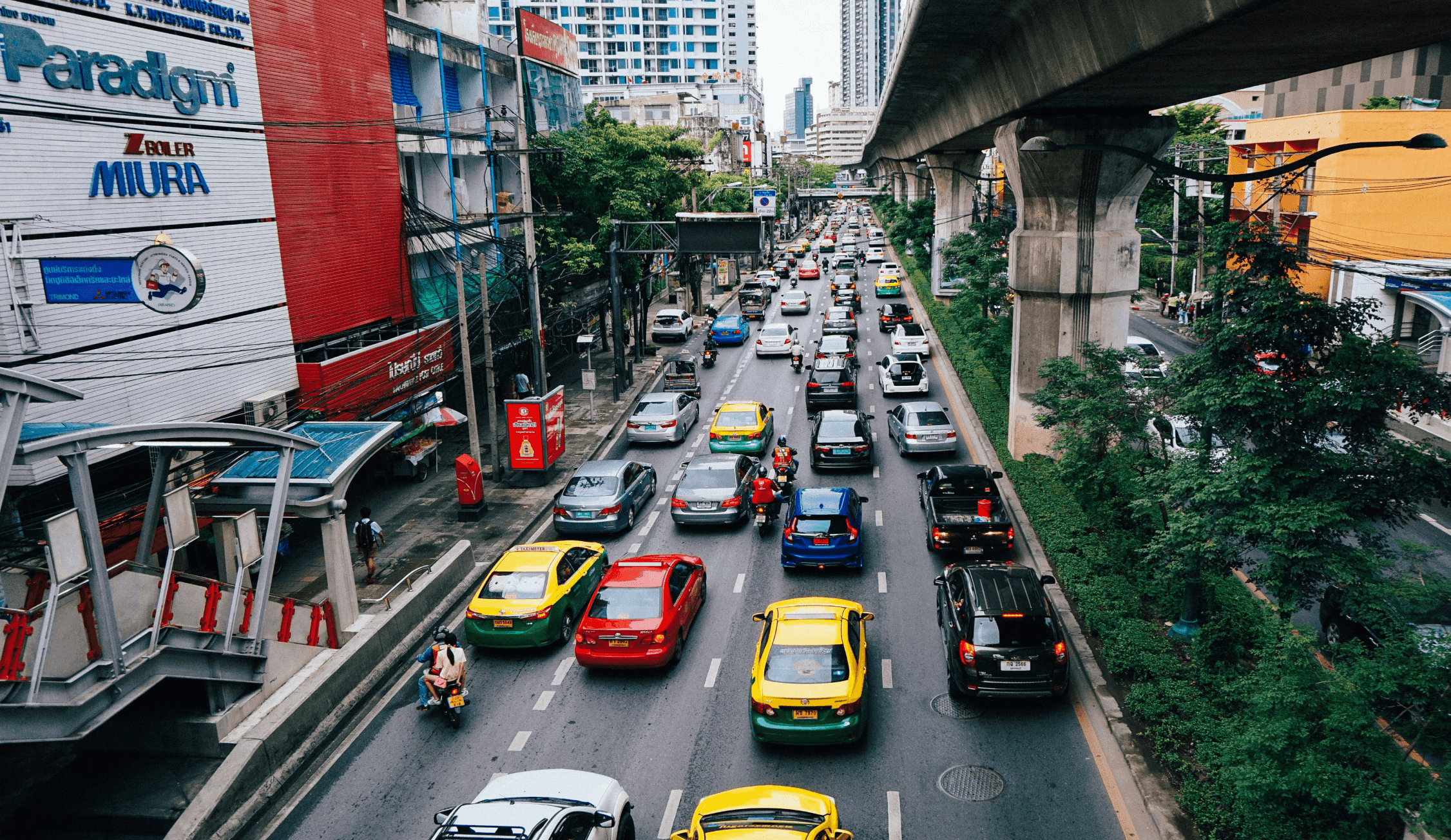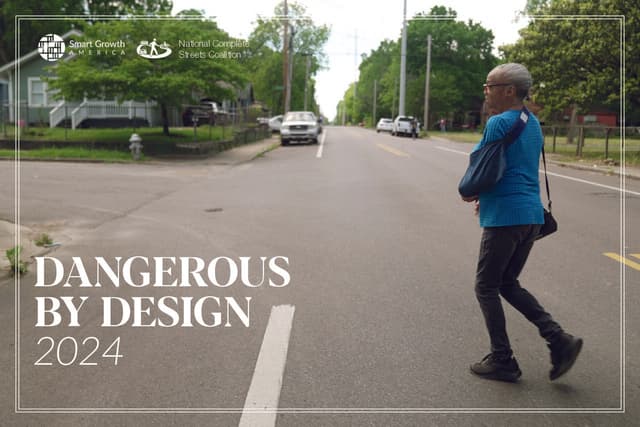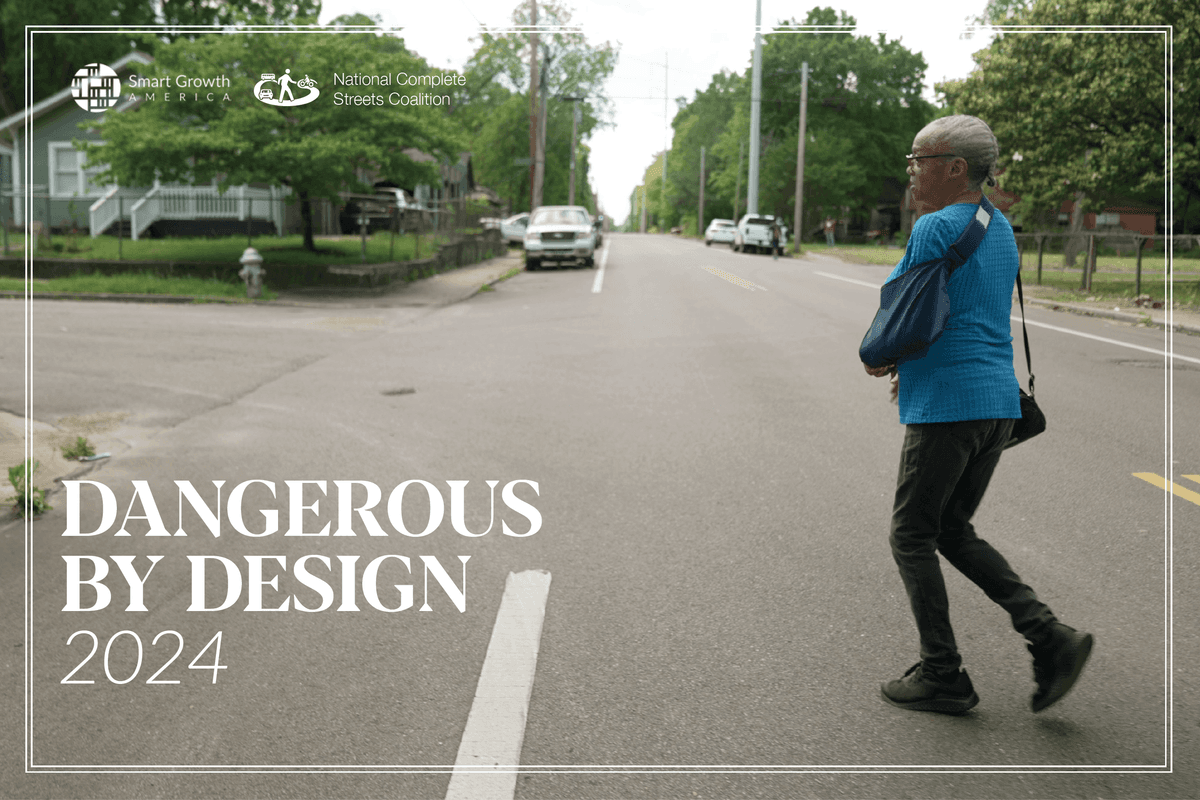
Signature reports
Dangerous by Design: An urgent call to prioritize pedestrian safety
Uncover the urgent truths behind America’s rising pedestrian fatalities and explore transformative solutions to create safer, more inclusive streets for everyone. Join us in reimagining our roadways—prioritizing people over cars to protect lives.
Guiding ideas
Federal Recommendation
The alarming rise in pedestrian fatalities demands urgent action. Federal agencies, state DOTs, and policymakers must implement comprehensive strategies to prioritize pedestrian safety and create safer streets for all.
Actions that can be taken right now
Bigger lifts
- USDOT should continue to examine and regularly update the Manual of Uniform Traffic Control Devices (MUTCD) and other design guidance documents to make sure they 1) have a clear intent to protect the safety of all road users, 2) do not unnecessarily stall safety improvements, 3) adopt new and emerging best practices in a timely manner 4) clearly delineate roles of individual design guides and federal manuals to eliminate confusion among practitioners USDOT should make significant changes to the crash reporting process to include better information on people with disabilities. (Read more on our recommendations for crash data).
- The funding available to be spent on safety-related projects at the state level should be explicitly allocated for this purpose. FHWA should increase transparent reporting on state spending through the Highway Safety Improvement Program (HSIP) and regularly update metrics on the programs’ performance.
- Congress should fully fund all programs intended to combat the rising rates of pedestrian fatalities.
- Congress should enable stronger federal action on safety by directing USDOT and FHWA to release stricter rules and guidance on protecting vulnerable road users.
- Congress should create fiscal penalties for states that continue to adopt a policy of road expansion over a policy of improvement and maintenance of existing facilities
State recommendation
Bigger lifts:
- State DOTs should support, encourage, and fund quick-build demonstration projects and other interventions by reviewing policies, permitting, and design standards and then proactively encouraging their use through new procedures. (As the Connecticut DOT has done here).
- State DOTs should require ongoing training for all new and existing staff and contractors working on transportation issues. These trainings should align with the state’s strategic vision and incorporate best practices, particularly those aimed at enhancing safety and access through design and maintenance.
- State legislatures should create a mandate that their state DOTs must set goals of reducing pedestrian deaths in the performance targets that states are required to set each year. State DOTs should work towards these goals by prioritizing safety ahead of reducing delay or congestion and investing in Complete Streets, Vision Zero programs, and safe, accessible infrastructure for the most vulnerable road users.
- State legislatures should require annual progress reports on the above-mentioned goals, review the effectiveness of the implemented strategies, and incorporate their findings into funding and policy decisions.
- State DOTs should go beyond the basic, minimum federal standards for roadway safety and accessibility. They must make safety the top priority governing all street design decisions, which may mean taking steps to evaluate what design guidance is used, what performance metrics are collected, and how funding is allocated across the state.
- State legislatures should require their DOTs to stop using level of service as a measure of success for road projects. Legislatures and DOTs should establish new measures of success, such as reduction in risk exposure, increase in protected ped/bike infrastructure, and travel counts of all modes so that moving vehicles quickly through a given area is not prioritized over the safety and convenience of people walking, biking, and taking transit.
- Implement context-appropriate speed limits supported by temporary-to-permanent street design changes.
- Take advantage of restriping or other maintenance projects to evaluate if the facility can and should support other modes of travel.
- Establish a crash review panel representative of multidisciplinary practitioners and community members to identify systemic issues leading to individual and repeated crashes and make recommendations to address them. (Strong Towns’ Crash Studio model is a great example.)
Local recommendation
Bigger lifts:
- Establish a crash review panel representative of multidisciplinary practitioners and community members to identify systemic issues leading to individual and repeated crashes and make recommendations to address them. (Strong Towns’ Crash Studio model is a great example.)
- Implement context-appropriate speed limits supported by temporary-to-permanent street design changes.
- Explore applying for Safe Streets and Roads for All funds to support street design changes and improve data collection.
- Improve local data collection and reporting to give the public clear information on the most dangerous streets and intersections and what’s being done to address them.
- Take advantage of restriping or other maintenance projects to evaluate if the facility can and should support other modes of travel.
- Adopt, implement, and fund Complete Streets policies or other legislation that support all modes, by prioritizing and addressing known risks for people walking, biking, rolling, and taking transit.

1350 I St NW Suite 425 Washington, DC 20005
[email protected]© 2025 Smart Growth America. All rights reserved
Site By3Lane Marketing








